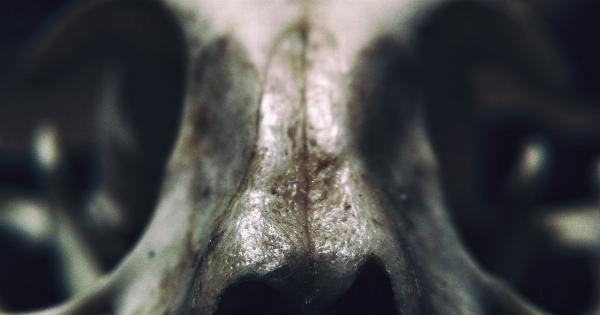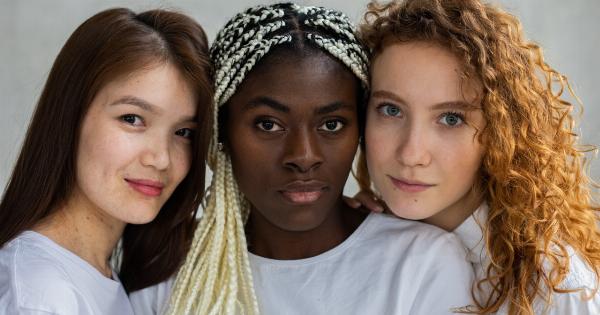Orgasms are one of the most pleasurable experiences a person can have. They release endorphins, relieve stress, and create a sense of euphoria.
But have you ever wondered why people make certain facial expressions when they reach climax? The infamous ‘orgasm face’ has intrigued scientists for years, and recent research has shed some light on the science behind this phenomenon.
The Role of Facial Muscles
When we experience orgasm, various muscles throughout our body contract involuntarily. This includes the muscles in our face, which can cause contortions and expressions that are unique to each individual.
The muscles around the mouth, eyes, and brow are particularly active during orgasm, resulting in the familiar ‘O’ shape mouth and widened eyes commonly associated with the ‘orgasm face’.
Evolutionary Significance
Although the ‘orgasm face’ may appear comical or awkward to some, it may actually serve an important evolutionary purpose.
Research suggests that the exaggerated facial expressions during orgasm may have evolved as a way to communicate sexual pleasure to a partner. These expressions can indicate to a partner that their efforts are successful and can provide valuable feedback for improving sexual experiences.
The Brain’s Involvement
Our brains play a crucial role in the experience of orgasm and the resulting facial expressions. During orgasm, several brain regions are activated, including the prefrontal cortex, amygdala, and hypothalamus.
These areas are responsible for processing pleasure, emotions, and sensory information. The activation of these regions can trigger facial muscle contractions, leading to the ‘orgasm face’.
Societal and Cultural Influences
While there are physiological and evolutionary explanations for the ‘orgasm face’, societal and cultural factors also play a significant role.
In many cultures, there is a stigma surrounding open displays of sexual pleasure, leading individuals to suppress or modify their natural facial expressions during orgasm. This can result in a wide range of ‘orgasm faces’ depending on an individual’s cultural background and personal comfort levels.
Individual Differences
Not everyone has the same ‘orgasm face’. Just like our fingerprints, each person’s facial muscles and expressions are unique.
Some individuals may have more exaggerated facial expressions during orgasm, while others may have more subtle or controlled reactions. Factors such as muscle tone, prior experiences, and personal inhibitions can all contribute to the individual differences in ‘orgasm faces’.
Role of Dopamine
Dopamine, a neurotransmitter often associated with pleasure and reward, is released in large quantities during orgasm. This surge of dopamine can intensify sensations and lead to heightened facial expressions.
Additionally, dopamine release can enhance the emotional and psychological aspects of orgasm, further impacting the ‘orgasm face’.
Facial Expressions and Sexual Pleasure
Studies have shown that individuals who exhibit more intense and expressive ‘orgasm faces’ tend to experience greater sexual pleasure and satisfaction.
This suggests a correlation between the intensity of facial expressions and the overall quality of the orgasmic experience. It is possible that the physical act of contorting facial muscles during orgasm may enhance the sensory and emotional aspects of the experience.
The Unconscious nature of the ‘Orgasm Face’
One intriguing aspect of the ‘orgasm face’ is that it is mostly unconscious. Many individuals are not aware of the specific facial expressions they make during orgasm unless they see themselves in a mirror or through video recordings.
This suggests that the ‘orgasm face’ is a natural and instinctive response, controlled largely by the unconscious mind.
The Role of Fantasies
Fantasies and mental imagery can significantly influence the ‘orgasm face’. Research shows that individuals who engage in vivid sexual fantasies tend to display more intense and varied facial expressions during orgasm.
Fantasies can engage the brain in powerful ways, leading to greater activation of facial muscles and more dramatic ‘orgasm faces’.
Conclusion
While the ‘orgasm face’ may be a subject of amusement or curiosity, there is a scientific basis behind this phenomenon.
The involuntary contractions of facial muscles, the brain’s involvement, evolutionary significance, and cultural influences all contribute to the unique expressions people make during climax. Understanding the science behind the ‘orgasm face’ can provide insights into the complexity of human sexuality and the varied ways in which we experience pleasure.






























